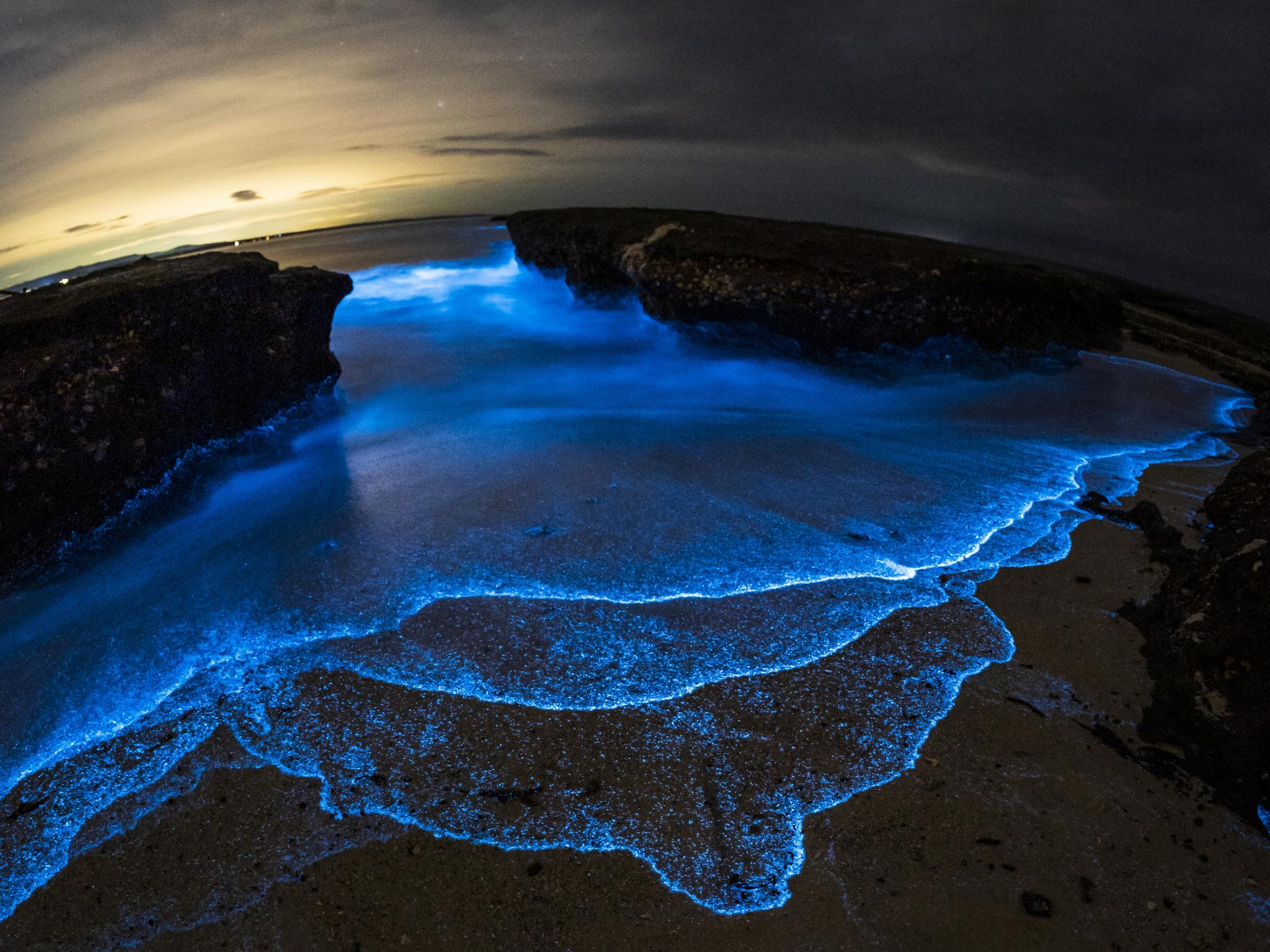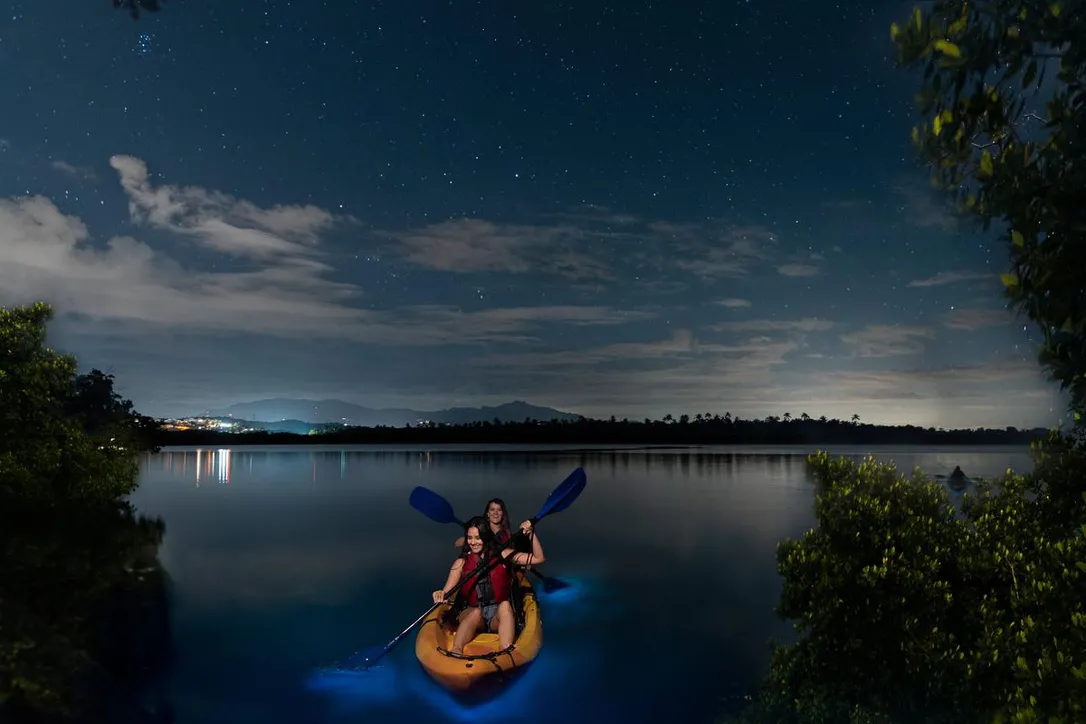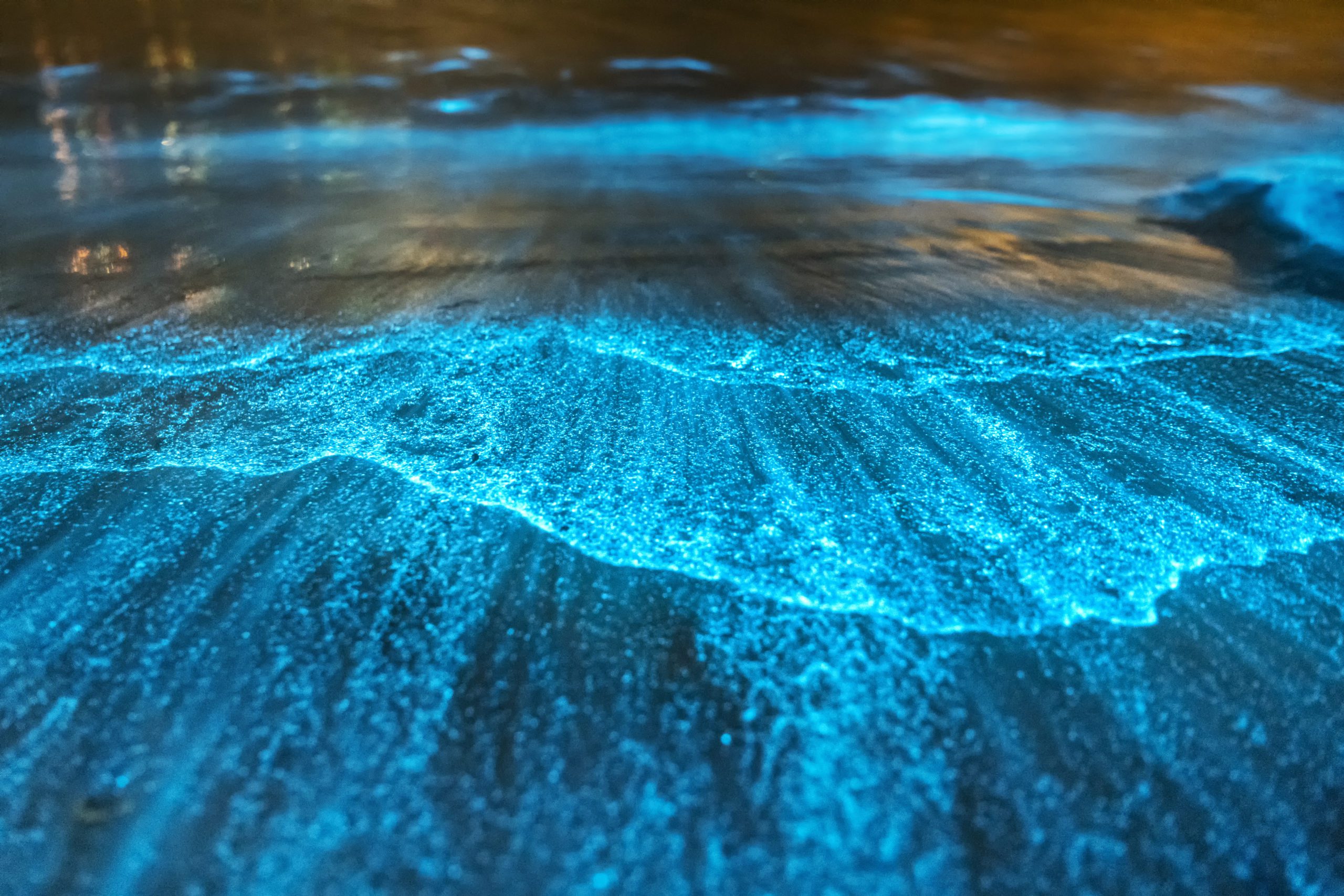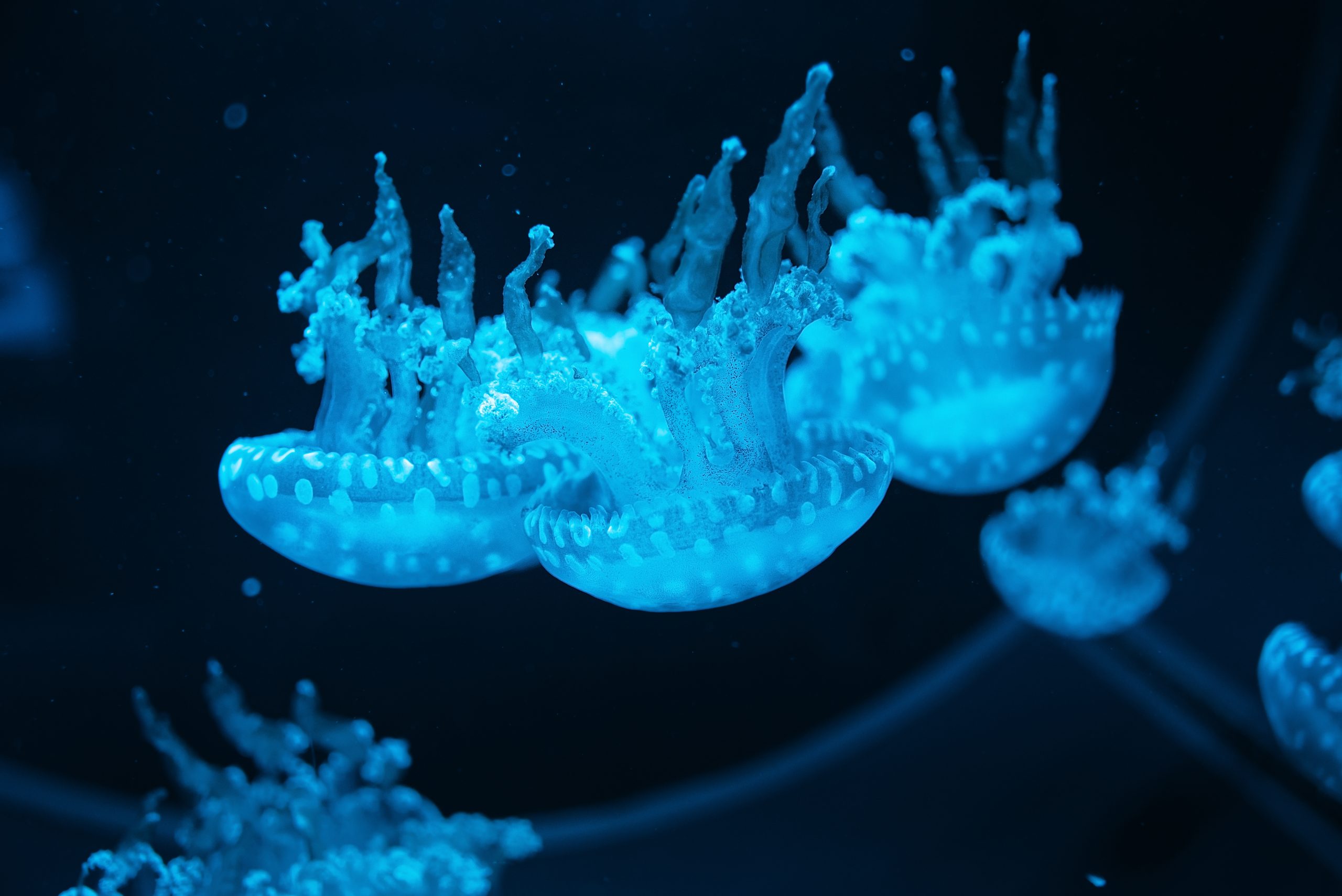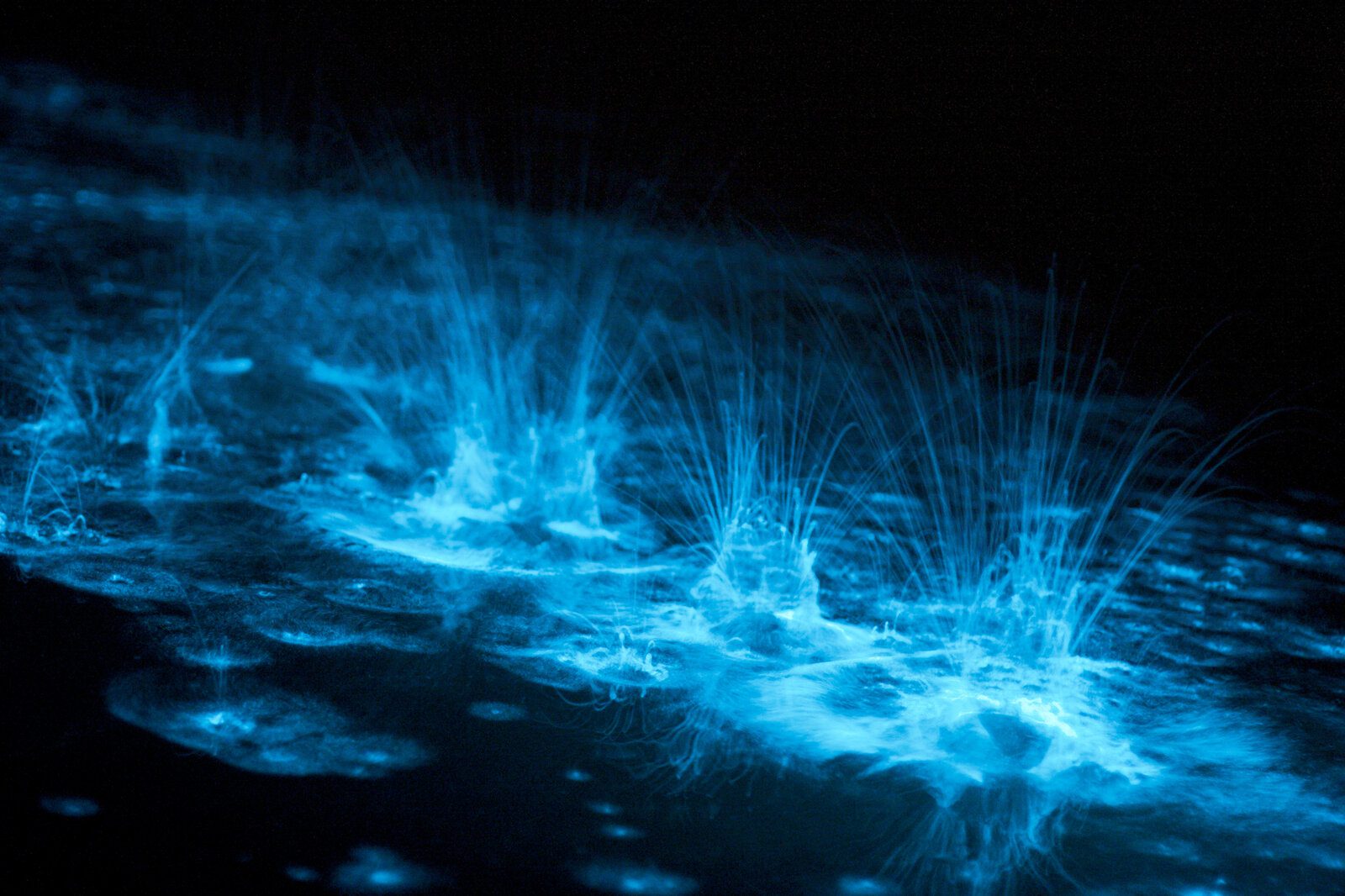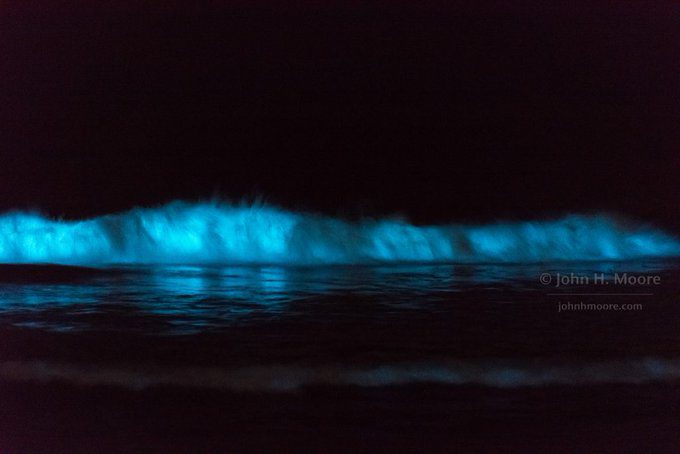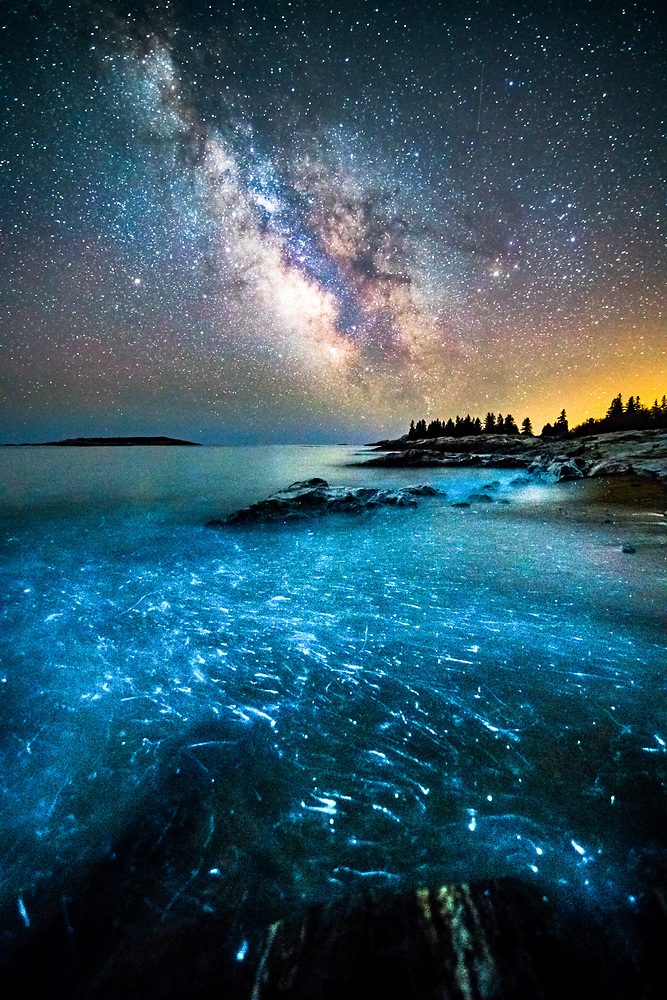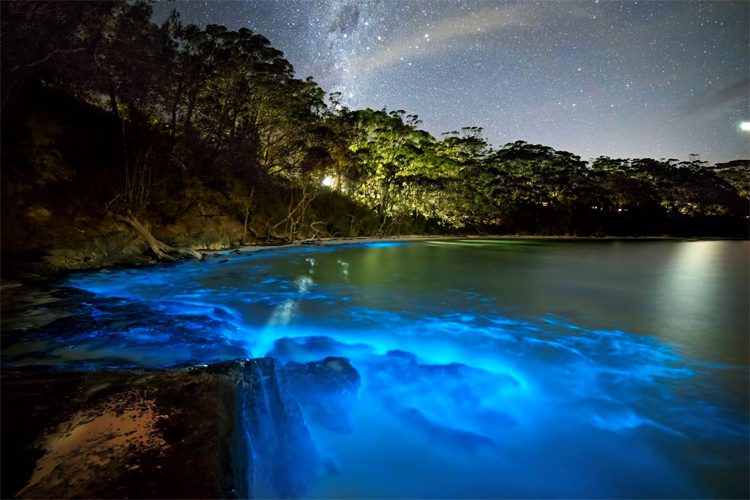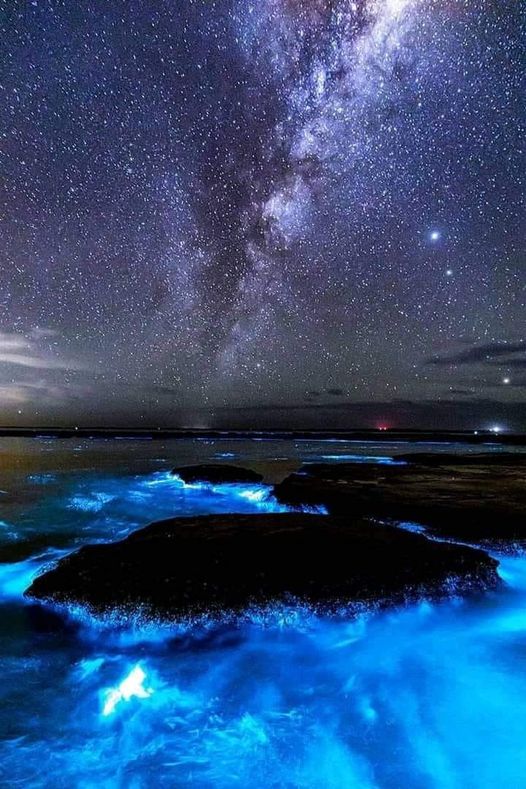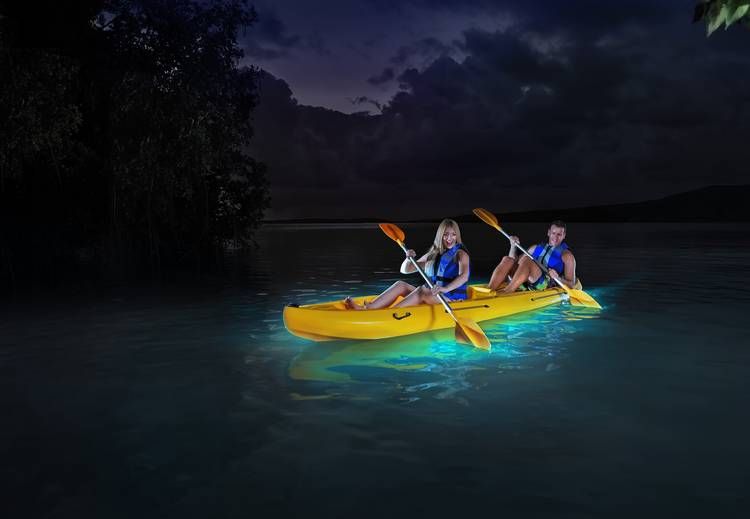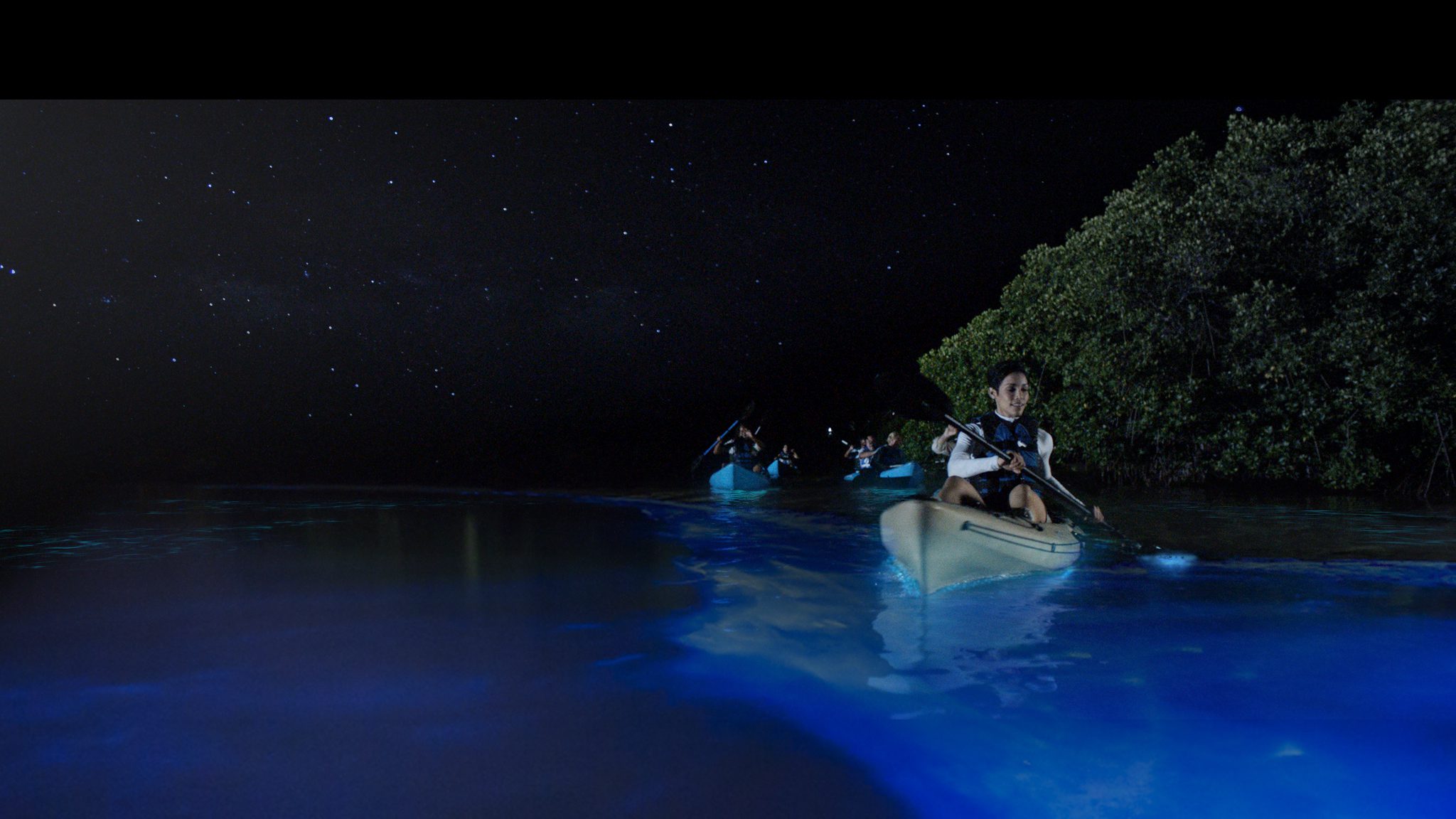Description
Learn about the Indigenous history of the area, local legends, and other interesting stories. Then, when darkness falls, nature’s wonders come to life! Deep in the ocean, there is very little sunlight. However, if you could swim down there, it would look a bit like the night sky. This is because many animals that live in the ocean produce light through a process called bioluminescence. A variety of different types of animals can bioluminesce, including fish, squid, shrimp, jellyfish and their relatives, marine worms, sea cucumbers, sea stars, and many types of phytoplankton.
Bioluminescence occurs due to a chemical reaction inside the animal’s cells. In some animals, these cells are located in a special light organ called a photophore that can resemble a spotlight. Other organisms emit a more general glow. The reaction involves two molecules, luciferin and luciferase, which produce light when they react with oxygen. The light produced can be red, yellow, green, blue, or violet, but in the ocean it is usually blue-green, as these wavelengths of light travel best through water (which is also why water appears blue). Animals can control when they light up by controlling the movement of oxygen into cells containing luciferin and luciferase.
Not all animals produce their own luciferin or luciferase. Some obtain these molecules by eating other bioluminescent organisms, and some have a special symbiotic relationship with bioluminescent bacteria. The bacteria live in the host, where they are sheltered and fed by the host animal. In return, they glow when the host needs light.
Your stay includes a tour of the area, a tutorial on the boat, a DIY seafood barbecue dinner, the use of kayaks on board, fishing gear, and breakfast. You will also receive a return zodiac tour to your condo on the water.
Organisms use bioluminescence for many different purposes. It can be used to attract prey, such as in the case of anglerfish that lurk deep in the midnight zone. These fish have a bioluminescent lure dangling in front of their toothy mouths, which attracts smaller fish and other animals that the anglerfish can then snatch up.
Bioluminescence can also be used to avoid predators. Phytoplankton can turn the surface of the water a sparkly blue when it is disturbed by fish swimming through or a boat motoring by. Scientists believe that the glow attracts larger predators that can scare off the original ones. Some fish, like hatchetfish, glow on their bellies. These fish live in the twilight zone, where little light from above reaches the depths. The glow helps them hide from predators lurking below by allowing them to blend in with the lighter water above. Squid living in waters from the sunlit zone to the depths of the midnight zone can flash their photophores to scare off predators. Deepwater shrimp in the twilight zone can also spew a cloud of glowing mucus into the water to confuse predators. Brittle stars and sea cucumbers on the seafloor of the sunlit zone may detach a glowing body part when threatened, allowing the rest of the animal to sneak away while the predator focuses on the glowing piece.

